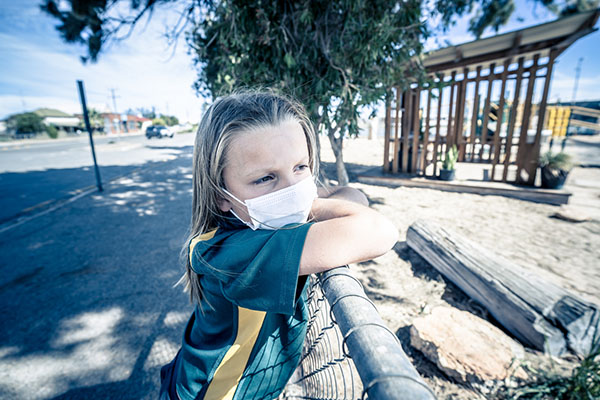As we approach the sixth month of widespread community transmission of COVID-19 in the United States, our focus must shift beyond acute management of disease to the broader effects of this pandemic on health and wellbeing. In particular, it is important that we understand the consequences of the COVID-19 pandemic on the mental health of children and adolescents. The rate of serious mental health illness in children has been escalating over the past two decades, with teen suicide rates more than doubling over the last ten years. The COVID-19 pandemic has led to significant financial and psychosocial stressors that are likely to increase the burden of mental health needs for youth.
Youth facing the most severe mental illness require inpatient mental health hospitalization. In a recent study in the Journal of Adolescent Health, my coauthors and I report on the impact of the COVID-19 pandemic on youth at a local behavioral health hospital. Our study details the medical and psychiatric management of 19 patients aged 11-17 who had COVID-19 while requiring psychiatric hospitalization. Caring for these patients required balancing physical and mental health care needs while providing adequate infection control. We also describe an innovative partnership between the psychiatric hospital and a local children’s hospital, which was leveraged to deliver acute medical health care in a mental health setting. We learned three major lessons in caring for these patients.
First, we learned that physical distancing directly conflicts with the mental health needs of our patients. Most of our COVID-19 positive patients had posttraumatic stress disorder (PTSD). Close personal interactions, including physical touch, are critical elements of child development and are possibly even more important for patients with complex trauma. Recognizing our patients’ need for social interaction and relational touch, we developed a COVID-19 unit where children who tested positive for the disease were able to interact freely with one another in typical ways, including arts and crafts, video games, and giving each other hugs. Staff on the unit maintained strict infection control practices, including personal protective equipment, physical distancing, and utilization of video conferencing when appropriate.
Second, we found symptom-based screening for COVID-19 to be inappropriate for our population. Only 26% of COVID-positive patients in our study presented with typical symptoms of cough, shortness of breath, or fever, and one in five patients who tested positive had no symptoms. Patients with anxiety or other mental health disorders are also more prone to experiencing somatic symptoms, which may mimic COVID-19. Leveraging our medical-psychiatric partnership to obtain on-site, same-day testing was critical in facilitating infection control while allowing the facility to continue accepting new admissions.
Lastly, our experience exposed vulnerabilities in the inpatient-outpatient continuum of care and highlighted the importance of medical-psychiatric partnerships to improving mental health care access. All of the COVID-19 positive patients in our cohort required placement at a residential psychiatric facility at discharge. However, many of these facilities limited admissions due to lack of resources to support COVID-19 patients and manage potential outbreaks. To ensure continuous availability of high acuity services, it is critical to develop strategies to maintain ongoing care for COVID-19 patients with mental health needs.
As we start another school year in the midst of the ongoing pandemic, child and adolescent mental health must be a priority for health care providers, parents, policymakers, and the broader child welfare community. We must ensure the availability of inpatient mental health services while advocating for trauma-centered care that aligns with infection control needs, especially for children who are at the highest risk of death or harm. Our experience also demonstrates the benefit of medical-psychiatric partnerships in caring for this high-risk population and maintaining the availability of both medical and psychiatric inpatient capacity more broadly.
The study, “COVID-19 Outbreak Among Adolescents at an Inpatient Behavioral Health Hospital,” was published online in Journal of Adolescent Health on August 11, 2020.
Follow the latest news on the coronavirus (COVID-19) outbreak
More information:
Polina Krass et al. COVID-19 Outbreak Among Adolescents at an Inpatient Behavioral Health Hospital, Journal of Adolescent Health (2020). DOI: 10.1016/j.jadohealth.2020.07.009
Provided by
University of Pennsylvania
Citation:
Adolescents, psychiatric hospitalization and COVID-19 (2020, September 29)
retrieved 30 September 2020
from https://medicalxpress.com/news/2020-09-adolescents-psychiatric-hospitalization-covid-.html
This document is subject to copyright. Apart from any fair dealing for the purpose of private study or research, no
part may be reproduced without the written permission. The content is provided for information purposes only.



